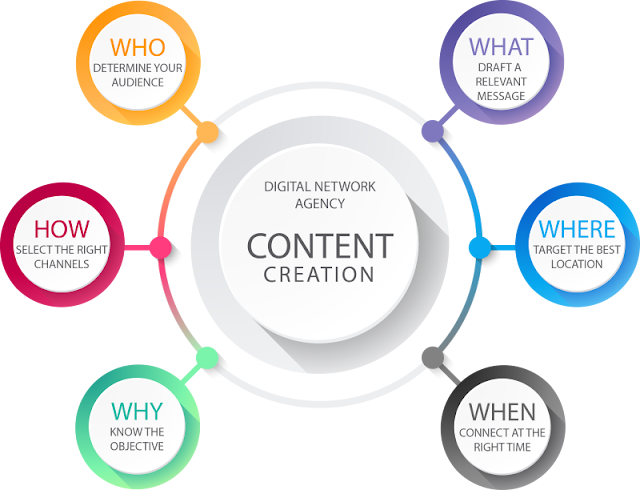A Comprehensive Guide: How to Boost Your
Website Traffic
In today's digital age, having a website is no longer just an option – it's a necessity. However, simply having a website is not enough; you need to ensure that your target audience can find and engage with it. This is where website traffic comes into play. In this comprehensive guide, we'll explore effective strategies to increase your website traffic and achieve online success. Let's dive in!
Understanding Website Traffic
Website traffic refers to the number of visitors who land on your website. It is a crucial metric because higher traffic often leads to increased brand exposure, engagement, and potential conversions. To successfully drive website traffic, you need a well-rounded approach that combines various techniques. Here's how you can get started:
1. Search Engine Optimization (SEO)
SEO is a cornerstone of online visibility. By optimizing your website's content, meta tags, and structure, you can improve your chances of ranking higher on search engine results pages (SERPs). Some key tips for effective SEO include:
Keyword Research:
Identify relevant keywords that your target audience is searching for. Utilize tools like Google Keyword Planner to discover high-traffic, low-competition keywords.
On-Page Optimization:
Incorporate your chosen keywords naturally into your content, headings, and meta descriptions. Make sure your website is easy to navigate and mobile-friendly.
2. Compelling Content Creation
Creating high-quality, relevant, and engaging content is vital for attracting and retaining visitors. Consider implementing the following strategies:
Blog Posts:
Regularly publish informative and valuable blog posts related to your industry. Use catchy headlines (H2 headings) to break down content and make it easier to read.
Visual Content:
Infographics, videos, and images can convey complex information more effectively and enhance user experience. Place images strategically within your content to maintain reader interest.
3. Social Media Engagement
Leverage the power of social media platforms to drive traffic to your website:
Content Sharing:
Share your blog posts, articles, and other valuable content on your social media channels. Use eye-catching headlines and images to grab users' attention.
Engagement:
Interact with your audience by responding to comments, asking questions, and conducting polls. This fosters a sense of community and encourages users to visit your website.
4. Guest Blogging
Collaborate with other websites and contribute guest posts that showcase your expertise:
Quality Over Quantity:
Focus on guest posting for reputable websites within your niche. High-quality backlinks from authoritative sites can significantly improve your website's credibility and traffic.
5. Email Marketing Campaigns
Email remains a powerful tool for driving traffic and nurturing relationships with your audience:
Compelling Content:
Create engaging email content with clear calls-to-action (CTAs) that direct readers to specific pages on your website.
Segmentation:
Segment your email list based on user preferences and behaviors. Send targeted content that resonates with each segment.
6. Pay-Per-Click (PPC) Advertising
PPC advertising allows you to place ads on search engines and social media platforms. This can be particularly effective when launching new products or promotions:
Keyword Selection:
Choose relevant keywords that align with your business and target audience.
Compelling Ad Copy:
Write persuasive ad copy that entices users to click and visit your website.
7. Analyze and Adapt
Regularly monitor your website's analytics to assess the effectiveness of your strategies:
Google Analytics:
Gain insights into visitor behavior, traffic sources, and conversion rates. Use this data to refine your approach.
A/B Testing:
Experiment with different strategies, such as headlines, visuals, and CTAs, to determine what resonates best with your audience.
By implementing these strategies, you can significantly increase your website traffic and create a thriving online presence. Remember, consistency is key. Continuously refine your approach based on data and user feedback to ensure long-term success.
Place images strategically throughout your blog post to enhance its visual appeal and convey information more effectively. Here are some suggestions for image placement:
1. Header Image:
Use an eye-catching image at the top of your blog post to capture readers' attention and set the tone for your content.
2. Throughout the Content:
Insert relevant images within the body of your text to break up long blocks of content and provide visual context for your ideas.
3. Step-by-Step Guides:
If you're explaining a process or providing a tutorial, include images to illustrate each step.
4. Graphs and Infographics:
Visualize data and complex information using graphs and infographics. Place them strategically where they support your points.
Conclusion:
Consider ending your blog post with a relevant and impactful image that reinforces your main message. Incorporating images thoughtfully can enhance the overall reading experience and make your content more shareable on social media platforms.
In conclusion, driving website traffic requires a multifaceted approach that combines SEO, compelling content creation, social media engagement, guest blogging, email marketing, PPC advertising, and data analysis. By following these strategies and placing images strategically, you can attract, engage, and retain a steady stream of visitors to your website, ultimately leading to increased brand visibility and business success.

%20(12).png)
%20(13).png)

%20(14).png)
%20(15).png)
%20(650%20%C3%97%20650%20px).png)
%20(650%20%C3%97%20650%20px)%20(1).png)

0 Comments